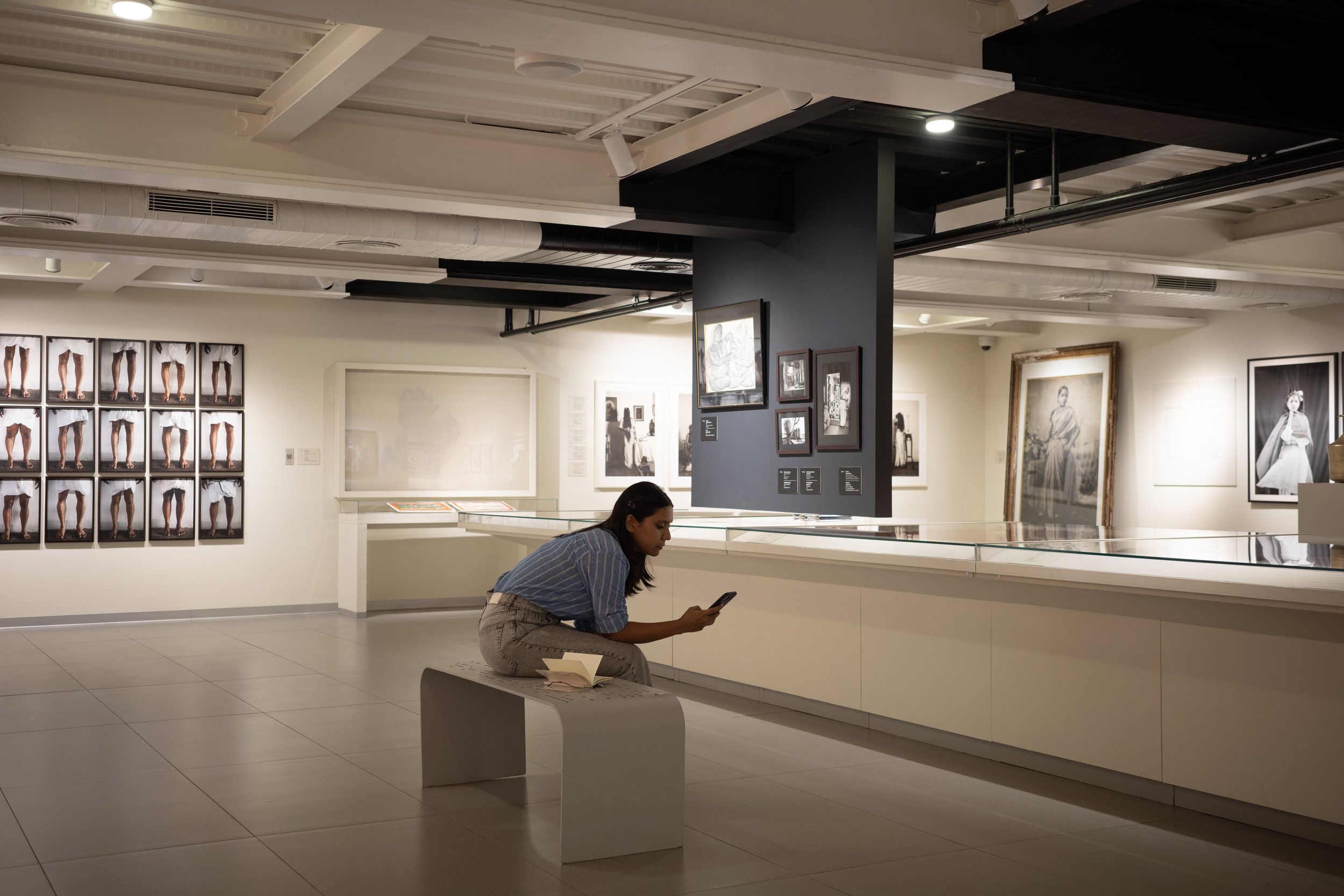At the Museum
Museum of Art and Photography, 2023
Adira Thekkuveettil
Adira at the Visible Invisible exhibition, Museum of Art and Photography, 2023
The museum is an institution, the museum is an archive, the museum is a school, the museum is the keeper of culture, the dictator of taste, and the final alter upon which an artist’s work is laid.
The artist goes to the museum to gaze and yearn. The museum has no real use for the artist themself, it is the work they produce that belongs. Here we are merely a viewer, and we behold the History of All Art, see technique up close, and breathe the heavy air of value. We calculate dates in our heads – how old was this artist when they made this? When was this work acquired by the museum? Was this artist famous? Are they still alive?
I pull out my phone, and the exhibition waits around me. The viewer is easily distracted, despite the wonder of the room’s design, its church-like calm, and the art breathing quietly around me.
Once I am Inside the Exhibition, it is Complete
Every detail of an exhibition’s construction is carefully calibrated with an idealised viewer in mind. And until the viewer enters it, the exhibition, and with it the museum, remains a well-preserved and closely guarded archive.
The order of display, the number and intensity of lights, the temperature of the room, the colour of the walls, the strength of the glass cases, the languages used on labels and the amount of detail they provide, the height at which a painting is hung, the distance from which it is meant to be viewed, the placement of security guards, the hidden alarms in place to prevent theft, have all been put in place for me, the viewer.
The Museum is Silent, mostly
You get progressively quieter as you move through a gallery. A third of the way through, you are reduced to whispers, even inside your head, and now, you need to sit down.
To rest means to stay and to stay means to look and to look (for long enough, until your mind goes quiet) means to listen. And to listen, we must rest.
Without the bench, the exhibition fails. But provide too many benches, and the visitor doesn’t want to leave. And so, the museum is strategic – the visitor must be welcomed but also awed; they must be enticed into the gallery, but not made too comfortable. In comfort and safety, the questions emerge.
We enter the museum to stand before a surface, urging it to speak, and afraid to listen to what it might reveal.
The Museum is Both the Judge and the Keeper of Value
How does a work of art or an artefact end up at a museum? How did this, an 18th-century wooden sculpture of Bhadrakali travel from Kerala (where in Kerala was it made?) all the way into the Museum of Art and Photography? The wood making up the sculpture’s lap has disintegrated in a particular formation that makes me wonder - was she holding something on her lap that was later lost? I would not know. What I do know, is that this object, artefact, work of art, sculpture, and religious icon, is now carefully conserved in a museum, and exhibited in a show called Visible/Invisible: Representation of Women in Art through the MAP Collection.
So it has been decided that this sculpture is a work of art, a work of skill, of cultural and historical value. And therefore, it is conserved, protected and displayed. Yet, to think about it feels odd. This object is valuable – to touch it, to light it too brightly, to even scrutinise it too closely (was this object stolen, taken, given, gifted, lost, recovered) would invite disapproval. The museum keeps its holdings sacred, by keeping it ‘safe’ from the world at large, and yet selectively visible, just like the temple in which this sculpture once likely sat.
The Museum is Exhaustive
It must be, in order to deserve the name. No one person can ever fully imbibe the museum, or even a single work of art within it, and yet the possibility tantalises every viewer. This is intentional.
I look at this skirt, and wonder how heavy it would have been, and who would have worn it - a young girl, an older woman? Clearly someone very involved with India’s anti-colonial movement. Was this design of the flag already in use in the 1930s as the label tells me? According to most other sources, it only came into effect after Independence in 1947. I try not to linger on the question.







